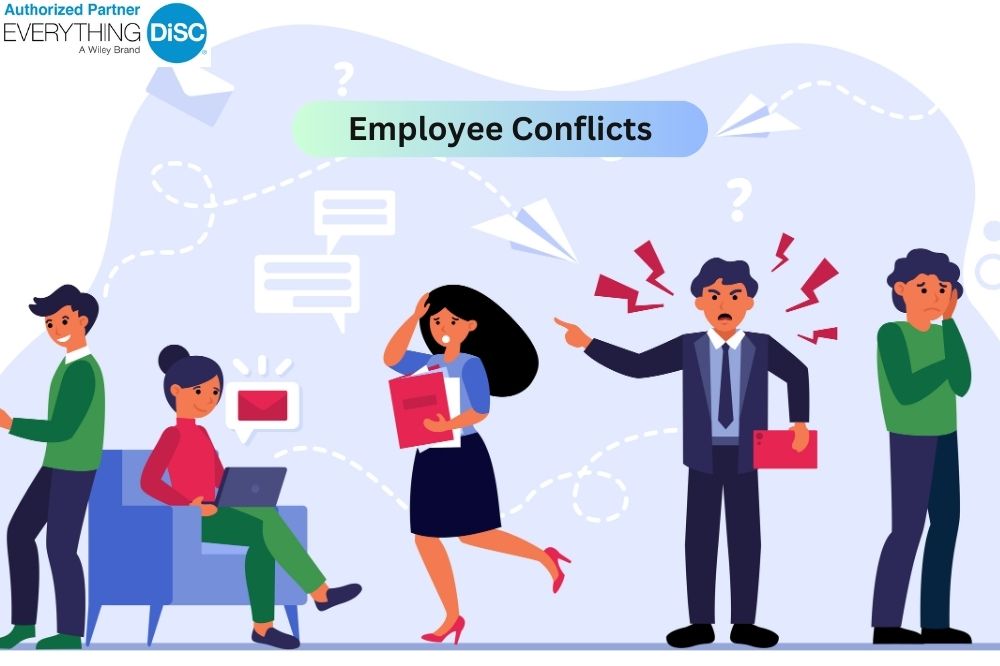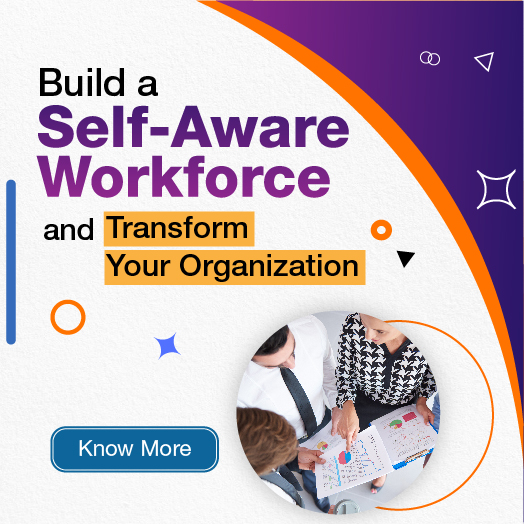
10 Ways to Resolve Employee Conflicts at Work
- Our Subject Matter Experts
- December 11, 2023

Introduction
Have you ever been a part of a team where things don’t go smoothly? It is like when friends have disagreements, but in the workplace. These disagreements among team members are called employee conflicts, and they can shake up the entire work atmosphere.
Think of it as a bump in the road at your job. When people don’t agree or have different ideas, it can create tension. Further, workplace harmony is crucial for productivity, but conflicts among employees can disrupt the delicate balance. In this fast-paced era where teamwork is often the driving force behind organizational success, employee conflicts can act as potential disruptors to the smooth flow of operations. They cast shadows over communication channels, hindering collaboration and sowing seeds of discord among team members. It not only compromises the quality of work but also influences the overall workplace ambiance, affecting morale and job satisfaction.
By understanding why people sometimes don’t see eye to eye and learning how to make things better, we can make our workplace a happier and more successful space for everyone.
7 Possible Reasons for Employee Conflicts at the Workplace
Addressing the possible reasons for employee conflicts at the workplace requires proactive communication, establishing clear guidelines, and fostering a culture of mutual respect. By recognizing and mitigating sources of employee conflicts, organizations can build stronger and more cohesive teams.
1. Communication Breakdown
Effective communication is the primary component that can determine the success and efficient performance of a team. When communication falters or becomes unclear, misunderstandings can arise, leading to conflicts. This breakdown may occur due to a lack of regular team meetings, inadequate information sharing, or misunderstandings in written or verbal communication.
2. Differing Work Styles
Teams consist of individuals with unique work habits and styles. Differences in how team members approach tasks, solve problems, or manage their time can affect team performance and employee conflict resolution strategies. For example, if one team member prefers detailed planning while another thrives in a more spontaneous work environment, conflicts may arise.
3. Role Ambiguity
When employees are unsure about their roles and responsibilities, confusion sets in. Ambiguity about who should handle specific tasks, make decisions, or take the lead on projects can create resentment among employees and lead to a sense of discontent and disagreements among team members.
4. Personality Clashes
Diverse personalities bring richness to a team but can also be a source of employee conflicts. Conflicting values, communication preferences, or working styles may cause tension. For instance, introverted and extroverted personalities may clash in terms of collaboration preferences, potentially leading to misunderstandings.
5. Lack of Recognition
Recognition is a crucial aspect of job satisfaction. When employees feel their efforts go unnoticed or unrewarded, resentment may build up. This lack of acknowledgment can breed dissatisfaction and ultimately lead to conflicts within the team.
6. Resource Allocation
Teams often operate with limited resources, and decisions about how to allocate these resources can be contentious. Whether it is budgetary constraints, project assignments, or access to essential tools, the competition for limited resources can create conflicts among team members and affect the process of employee conflict resolution.
7. Unclear Expectations
Setting clear expectations is vital for the smooth functioning of a team. When team members are uncertain about their goals, project outcomes, or performance expectations, it opens the door to employee conflicts. Misaligned expectations can lead to frustration, blame, and disputes within the team.
10 Tips for Effective Employee Conflict Resolution
By adopting these proactive measures, organizations can create a work environment that minimizes conflicts and fosters a culture of collaboration and open communication.
1. Open Communication:
Encourage employees to express their concerns openly. Create a safe space for them to share their perspectives, allowing for a more comprehensive understanding of the issues for effective employee conflict resolution.
2. Mediation:
Introduce a neutral third party, such as a mediator, to facilitate discussions. Mediators can guide conversations, ensuring all parties have an opportunity to voice their opinions and work towards a resolution.
3. Define Expectations:
Clarify job roles, responsibilities, and performance expectations. Ensure that everyone understands their duties, reducing the likelihood of employee conflicts arising from ambiguity.
4. Team-Building Activities:
Organize team-building exercises to improve camaraderie and understanding among team members. Activities that foster collaboration and communication can help mitigate conflicts.
5. Conflict Resolution Training:
Provide adequate training on employee conflict resolution skills to address increasing disagreements within a team. Equip employees and managers with the tools needed to address conflicts constructively and find mutually beneficial solutions.
6. Establish Policies:
Implement clear conflict resolution policies within the organization. These policies should outline procedures for reporting conflicts, the role of management, and steps for resolution.
7. Encourage Empathy:
Promote empathy among team members to resolve employee conflicts and differing opinions. Encourage individuals to consider each other’s perspectives, fostering a culture of understanding and tolerance.
8. Performance Feedback:
Regularly provide constructive feedback on performance. Addressing concerns proactively can prevent them from escalating into more significant conflicts.
9. Set Realistic Goals:
Ensure that team goals and expectations are realistic and achievable. Unrealistic targets can lead to frustration and conflicts among team members striving to meet unattainable objectives.
10. Conflict Monitoring:
Implement regular conflict monitoring mechanisms to enhance the scope of Employee Conflict Resolution in the Workplace. Keep an eye on team dynamics and intervene at the earliest signs of potential conflicts to prevent them from escalating.
Conclusion
In the dynamic landscape of the workplace, conflicts are inevitable, but how we address and manage them can define the health and success of an organization. Navigating the complexities of employee conflicts requires a strategic and empathetic approach.
Remember, employee conflicts, when handled constructively, can lead to innovation and stronger team bonds. Embracing a proactive stance towards conflict resolution not only improves individual and team dynamics but also contributes to a positive organizational culture where every member feels valued and heard. By addressing the root causes and implementing these conflict resolution tips, organizations can create a workplace where collaboration thrives, leading to increased employee satisfaction and productivity.
FAQs Related to Employee Conflicts at the Workplace
Why do conflicts arise in the workplace?
Workplace conflicts can occur due to various factors, including miscommunication, differing work styles, role ambiguity, personality clashes, lack of recognition, resource allocation issues, and unclear expectations.
How can organizations address conflicts proactively?
Organizations can address employee conflicts proactively by fostering open communication, providing conflict resolution training, establishing clear policies, organizing team-building activities, and promoting a culture of empathy and understanding.
Are conflicts detrimental to employee engagement?
Yes, unresolved conflicts can negatively impact employee engagement. Studies show that engaged employees experience fewer conflicts, leading to a positive work environment for better overall engagement.
What role does leadership play in conflict resolution?
Leadership plays a crucial role in employee conflict resolution by setting clear expectations, providing feedback, and creating a supportive work culture. Effective leaders proactively address conflicts, promote open communication, and lead by example in fostering collaboration.
How can conflicts be turned into opportunities for growth?
It is possible to turn conflicts into growth opportunities by encouraging open dialogue, learning from diverse perspectives, and implementing constructive solutions. When conflicts are addressed effectively, they can lead to improved teamwork, innovation, and a stronger organizational culture.







